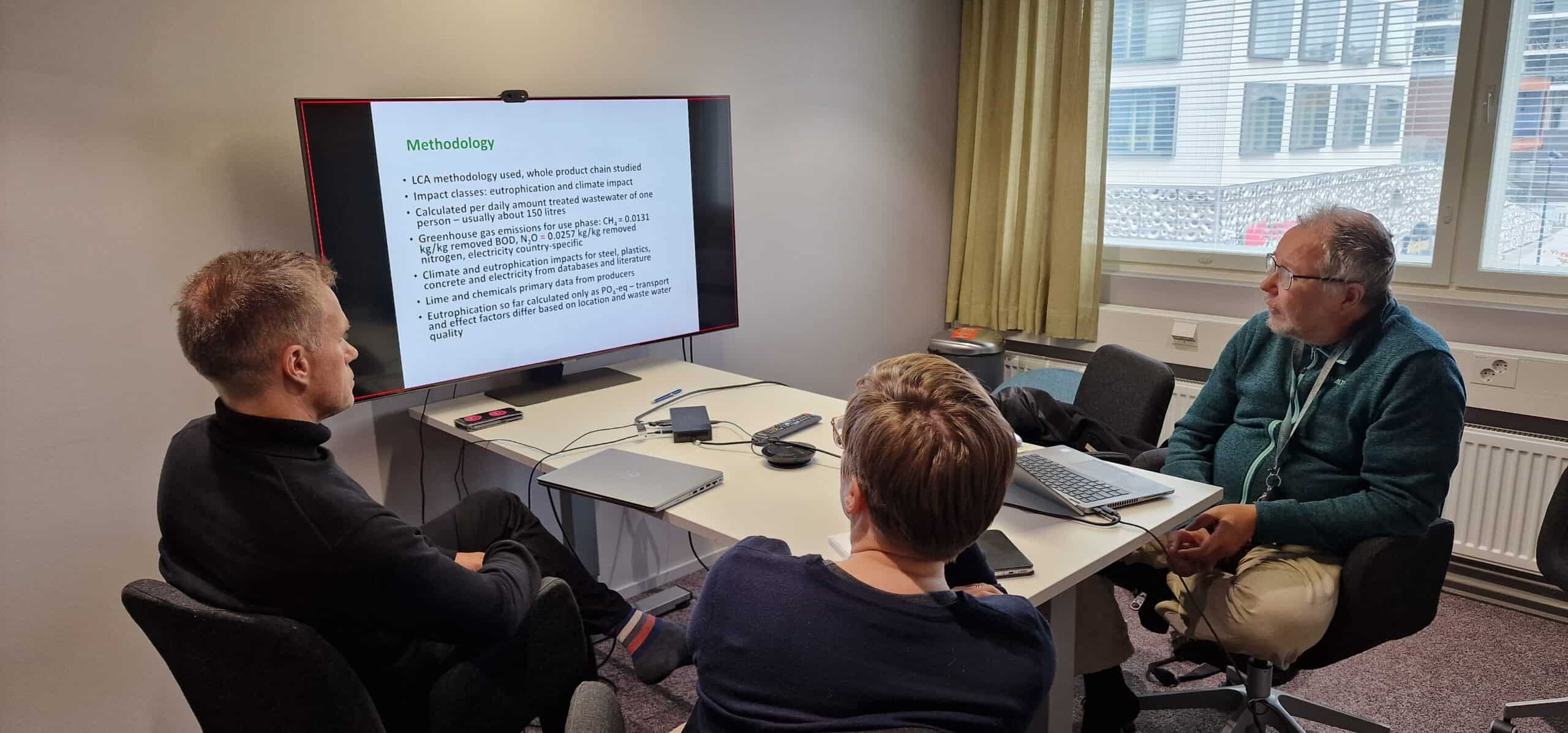
Gaining insights on the sanitation safety plan framework
29 October 2024
The purpose of the visit was to explore the practical applications of the SSP, particularly for small-scale wastewater treatment and environmental risk management. This visit created an invaluable opportunity to exchange knowledge, share best practices, and strengthen our joint efforts to support coastal resilience.
SYKLI’s experts provided a detailed overview of the SSP framework, emphasizing its core principles: identifying risks and hazards, selecting risk-reduction measures, and developing and implementing incremental improvement plans. The SSP is a web-based tool developed by the Ministry of Social Affairs and Health for comprehensive risk management in water supply, allowing wastewater treatment plants to assess and manage health and environmental risks.
The SSP is modeled after the Water Safety Plan (WSP), which includes hazard identification, risk assessment, and risk management, following recommendations from the World Health Organization (WHO). These principles have been adapted for wastewater treatment and drainage risk management.
During the visit, the life cycle assessment results from the previous VillageWaters wastewater project were reviewed. Luke’s researcher Frans Silvenius presented findings on the carbon footprint and eutrophication effects of the upgraded wastewater systems from the VillageWaters project. The results indicated that when normalized, eutrophication had a greater environmental impact than climate change in wastewater treatment.
About the organisations:
SYKLI Environmental College builds a sustainable future by educating professionals for the workplace and enhancing organisational performance. We collaborate with professionals, experts, businesses, and organisations across Finland.
The Natural Resources Institute Finland (Luke) is a research organisation operating under the Ministry of Agriculture and Forestry of Finland. Luke’s task is to promote competitive business based on the sustainable use of renewable natural resources, as well as wellbeing and the vitality of the countryside.







